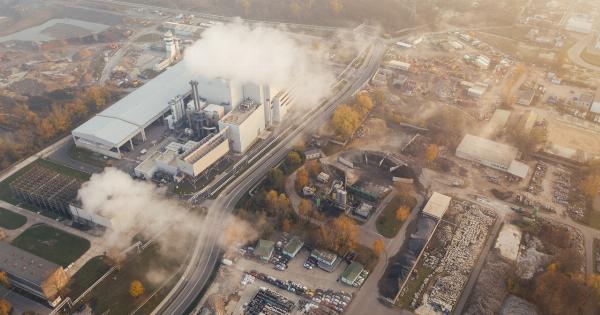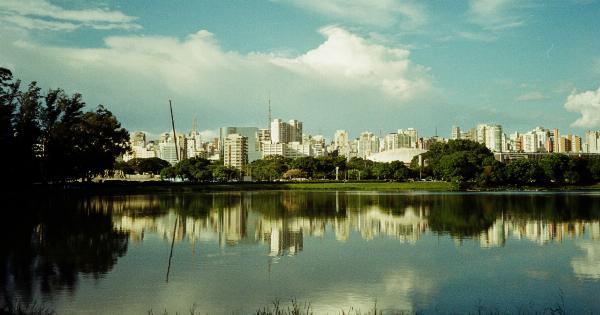The distinct smell of the Gulf, particularly in coastal areas, has long been a topic of interest and discussion. Some love the smell, associating it with the sea and the unique atmosphere of beachside living.
However, others find it unpleasant and overpowering. Understanding the factors that contribute to the Gulf smell can help shed light on why it occurs and also explore potential solutions to mitigate its effects.
What Causes the Gulf Smell?
The Gulf smell is mainly attributed to a combination of natural and human factors. Let’s delve into some of the most significant contributors:.
1. Algae Blooms
Algae blooms, particularly those caused by Karenia brevis, a species of harmful algal bloom (HAB), are a common occurrence in the Gulf of Mexico.
These blooms release substances known as “volatile organic compounds” (VOCs) as byproducts of their biological processes. These VOCs can contribute to the characteristic odor in the surrounding area.
2. Decomposing Organic Matter
The Gulf is a diverse ecosystem that supports a wide range of marine life. When this marine life dies, it decomposes, releasing hydrogen sulfide gas (H2S).
H2S has a distinct smell similar to that of rotten eggs, which can be particularly pungent in coastal areas with stagnant water or poor circulation.
3. Industrial Pollution
Human activities, including industrial processes and shipping, can contribute to pollution in the Gulf. Chemical pollutants can react with natural compounds in the water, leading to the release of foul-smelling gases.
Oil spills, although less frequent, can also leave a lasting odor in affected areas.
4. Bacterial Activity
Bacteria naturally present in the Gulf can produce sulfur compounds, such as dimethyl sulfide (DMS), which have a strong, unpleasant odor.
Bacterial activity increases in warm waters, which explains why the Gulf smell is often more noticeable during hot summer months.
5. Sewage and Wastewater Discharge
Sewage and wastewater discharge can introduce a variety of chemicals and pollutants into the Gulf, contributing to the unpleasant smell.
Sewage treatment processes may not entirely remove odor-causing compounds before discharge, especially during periods of heavy rainfall or system overload.
6. Red Tide
Red tide is another type of harmful algal bloom caused by the dinoflagellate Karenia brevis. The release of toxins by red tide can exacerbate the Gulf smell and pose a threat to marine life and human health.
7. Environmental Conditions
Environmental factors, such as wind patterns and water temperature, can influence the intensity and spread of the Gulf smell. Wind can carry the odor over long distances, affecting areas far from the source.
Higher temperatures can promote increased biological activity and faster decomposition rates, intensifying the smell.
Managing and Reducing the Gulf Smell
While completely eliminating the Gulf smell may be challenging, several measures can help manage and reduce its impact:.
1. Monitoring and Early Detection Systems
Developing robust monitoring systems to detect and track algae blooms and red tide can aid in prompt responses to minimize their effects.
Early detection allows for timely implementation of mitigation strategies, reducing the spread and intensity of the Gulf smell.
2. Algae Bloom Remediation
Implementing methods to control and mitigate harmful algae blooms can help reduce the release of VOCs into the air.
Strategies include introducing predators of harmful algae, using specialized filtration systems, or applying chemical treatments to limit their growth.
3. Pollution Control and Regulations
Stricter regulations and enforcement of pollution control measures can minimize the release of chemicals into the Gulf. Industries must adhere to guidelines and protocols to prevent pollution and maintain a clean and odor-free environment.
4. Sewage Treatment Improvements
Upgrading and maintaining sewage treatment systems can help remove odor-causing compounds more effectively, reducing the impact of sewage discharge on the Gulf smell.
Advanced treatment technologies, such as carbon filtration and ozone disinfection, can be employed to enhance odor removal.
5. Public Awareness and Education
Increasing public awareness about the Gulf smell and its causes can foster a sense of responsibility and encourage individuals to adopt environmentally friendly practices.
Education programs can emphasize the importance of conserving the Gulf’s ecosystem and reducing pollution to mitigate the smell.
6. Oil Spill Prevention and Response
Strict safety measures, rigorous inspections, and improved response plans can help prevent oil spills and minimize their impact. Effective containment and cleanup efforts can reduce the persistence of oil-related odors in the Gulf.
7. Coastal Zone Management
Implementing comprehensive coastal zone management strategies can help maintain healthy ecosystems and minimize pollution.
This includes preserving wetlands, promoting sustainable development practices, and ensuring proper waste management and runoff control.
Conclusion
The Gulf smell is a complex issue influenced by a combination of natural and human factors.
Algae blooms, decomposing organic matter, industrial pollution, bacterial activity, sewage discharge, red tide, and environmental conditions all play a role in creating the distinct odor. While completely eliminating the Gulf smell may be challenging, proactive measures can be taken to manage and reduce its impact.
By implementing monitoring systems, improving sewage treatment, controlling pollution, raising public awareness, and adopting sustainable practices, we can work towards preserving the Gulf’s ecosystem and minimizing the smell for future generations.






























